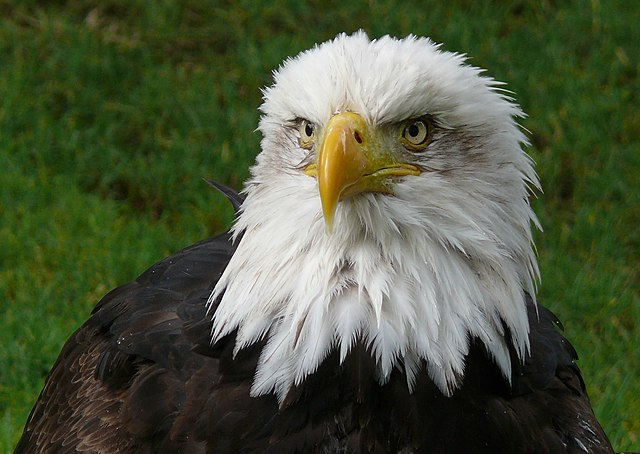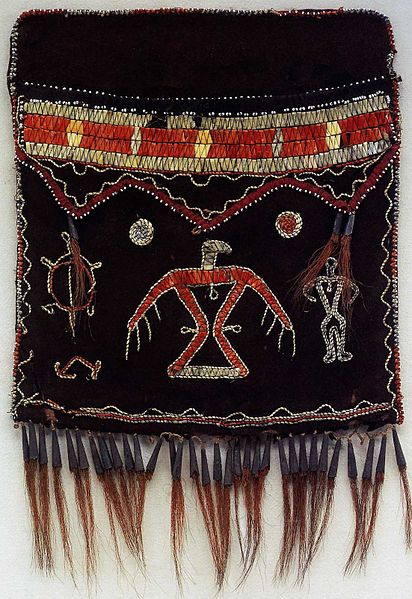The Anishinaabe, like most Algonquian-speaking groups in North America, base their system of kinship on clans or totems. The Ojibwe word for clan was borrowed into English as totem. The clans, based mainly on animals, were instrumental in traditional occupations, intertribal relations, and marriages. Today, the clan remains an important part of Anishinaabe identity. Each clan is forbidden from harming its representation animal by any means, as it is a bad omen to do so.
Image: Grus canadensis nbii m 00554A
Image: Common Loon
Image: Black Bear
Image: Águila calva
The Anishinaabe are a group of culturally related Indigenous peoples present in the Great Lakes region of Canada and the United States. They include the Ojibwe, Odawa, Potawatomi, Mississaugas, Nipissing and Algonquin peoples. The Anishinaabe speak Anishinaabemowin, or Anishinaabe languages that belong to the Algonquian language family.
Pictograph of a canoe (top left), Mishipeshu (top right), and two giant serpents (chi'gnebikoog), panel VIII, Agawa Rock, Lake Superior Provincial Park, Ontario, Canada
Anishinaabe shoulder bag, Ojibwa, Ontario, 1820
Anishinaabe Reserves/Reservations in North America, with diffusion rings if an Anishinaabe language is spoken. Cities with Anishinaabe population also shown.
Members of the Anishinaabe nation harvesting wild rice from a lake in Brainerd, Minnesota, in the year 1905.








